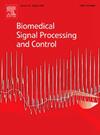CS-SwinGAN: A swin-transformer-based generative adversarial network with compressed sensing pre-enhancement for multi-coil MRI reconstruction
IF 4.9
2区 医学
Q1 ENGINEERING, BIOMEDICAL
引用次数: 0
Abstract
Magnetic resonance imaging (MRI) reconstruction from undersampled k-space data is a crucial area of research due to its potential to reduce scan times. Current deep learning approaches for MRI reconstruction often combine frequency-domain and image-domain losses, optimizing their sum. However, this approach can lead to blurry results, as it averages two fundamentally different types of losses. To address this issue, we propose CS-SwinGAN for multi-coil MRI reconstruction, a swin-transformer-based generative adversarial network with a Compressed Sensing Block for pre-enhancement. The newly introduced Compressed Sensing Block not only facilitates the separation of frequency-domain and image-domain losses but also serves as a pre-enhancement stage that promotes sparsity and suppresses aliasing, thereby enhancing reconstruction quality. We evaluate CS-SwinGAN in both standard MRI reconstruction tasks and under varying noise levels in k-space to assess its performance across diverse conditions. Numerical experiments demonstrate that our framework outperforms state-of-the-art methods in both conventional reconstruction and noise suppression scenarios. The source code is available at https://github.com/notmayday/CS-SwinGAN_MC_Rec.
CS-SwinGAN:一种基于旋转变压器的生成对抗网络,具有压缩感知预增强,用于多线圈MRI重建
磁共振成像(MRI)从欠采样k空间数据重建是一个重要的研究领域,因为它有可能减少扫描时间。目前用于MRI重建的深度学习方法通常结合频域和图像域损失,优化它们的总和。然而,这种方法可能导致模糊的结果,因为它平均了两种根本不同类型的损失。为了解决这个问题,我们提出了用于多线圈MRI重建的CS-SwinGAN,这是一种基于旋转变压器的生成对抗网络,带有用于预增强的压缩感知块。新引入的压缩感知块(Compressed Sensing Block)不仅有助于分离频域和图像域损失,还可以作为预增强阶段,促进稀疏性,抑制混叠,从而提高重建质量。我们评估了CS-SwinGAN在标准MRI重建任务和k空间中不同噪声水平下的性能,以评估其在不同条件下的性能。数值实验表明,我们的框架在传统的重建和噪声抑制场景中都优于最先进的方法。源代码可从https://github.com/notmayday/CS-SwinGAN_MC_Rec获得。
本文章由计算机程序翻译,如有差异,请以英文原文为准。
求助全文
约1分钟内获得全文
求助全文
来源期刊

Biomedical Signal Processing and Control
工程技术-工程:生物医学
CiteScore
9.80
自引率
13.70%
发文量
822
审稿时长
4 months
期刊介绍:
Biomedical Signal Processing and Control aims to provide a cross-disciplinary international forum for the interchange of information on research in the measurement and analysis of signals and images in clinical medicine and the biological sciences. Emphasis is placed on contributions dealing with the practical, applications-led research on the use of methods and devices in clinical diagnosis, patient monitoring and management.
Biomedical Signal Processing and Control reflects the main areas in which these methods are being used and developed at the interface of both engineering and clinical science. The scope of the journal is defined to include relevant review papers, technical notes, short communications and letters. Tutorial papers and special issues will also be published.
 求助内容:
求助内容: 应助结果提醒方式:
应助结果提醒方式:


